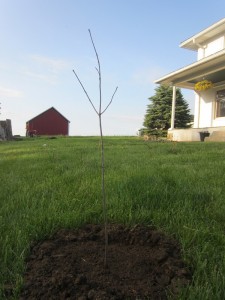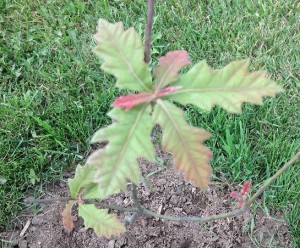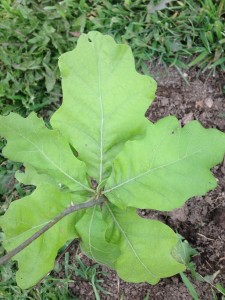I’ve already told you about the trees we planted. Turns out one drawback of planting dormant bare root saplings is that you have to have complete faith in the nursery that you’re getting what they say you’re getting. In our case, we ordered five Red Oak trees and received five 3 to 4 foot sticks with a few fragile roots on one end. Not an issue if they all start to grow (which they did), but what if they aren’t Red Oaks?
The first few weeks after planting the trees, the kiddos and I continued to hunt for buds – any sign the trees were going to make it. It took some time, but after awhile each tree started to green up. As we watched the small buds shoot into leaves, I became less concerned if the trees were going to live and more curious about what they actually were.
While two of the trees look like the photo above with typical pointed Red Oak leaves, the other three trees are noticeably different.
While the leaves still look like that of an oak, the rounded lobes aren’t characteristic of a Red Oak, but rather a White Oak. Fortunately, the Arbor Day Foundation is great to work with. They confirmed that some of their White Oaks were mislabeled and inadvertently shipped to us as Red Oaks. We’ll be receiving replacement trees during the next shipping season. So, while we can’t completely take the trees off of our to-do-list quite yet, at least know we won’t have to decide on what trees we’ll be planting in the pasture as future shade trees for the cattle – the White Oaks can be moved out there next spring.




